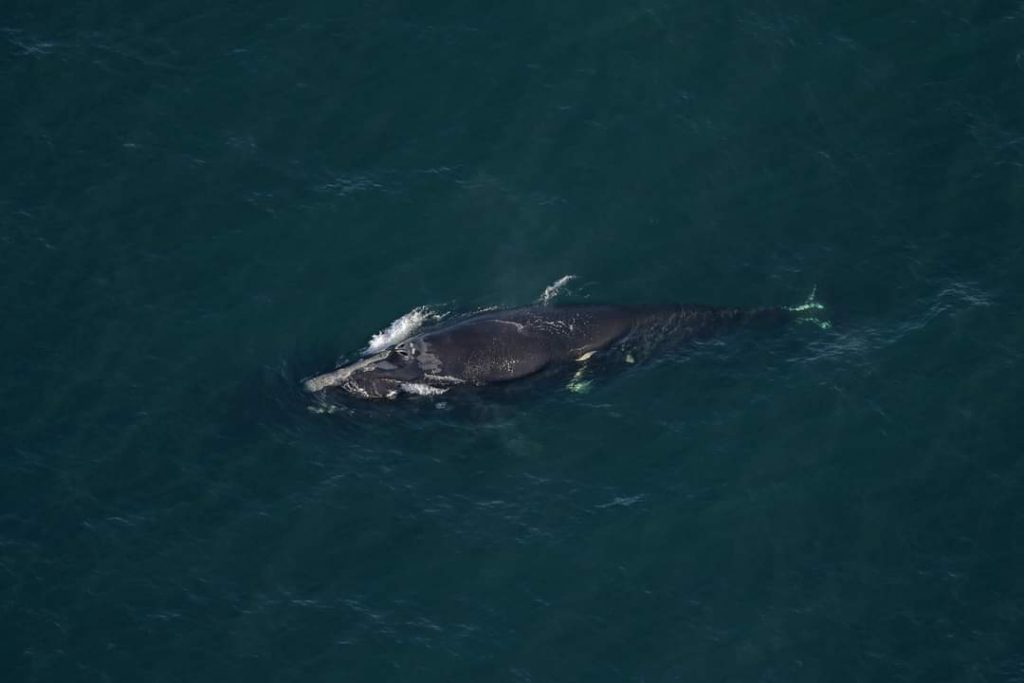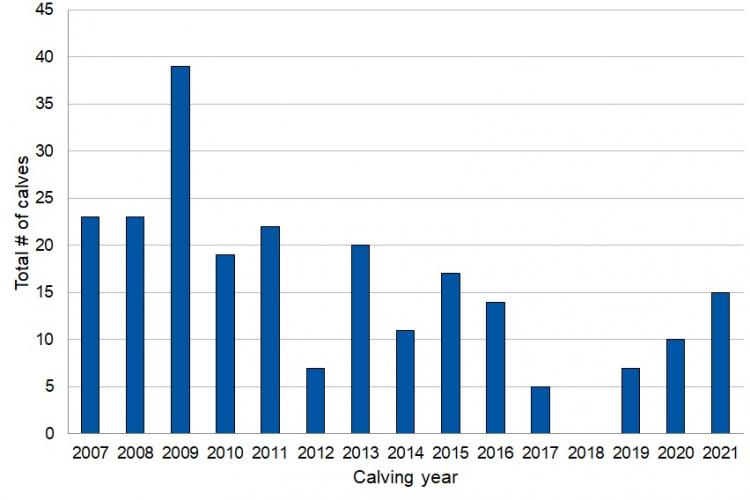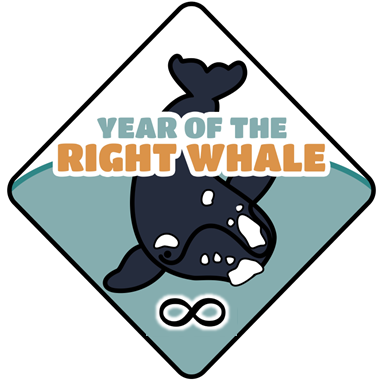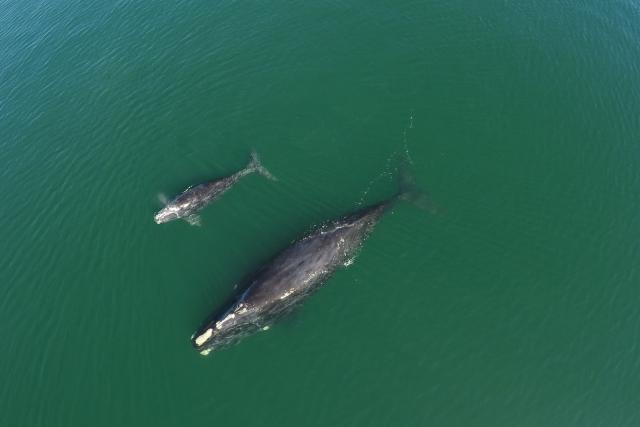Photo above credit: Clearwater Marine Aquarium Research Institute, taken under NOAA permit #20556-01
New Calves in 2021
The next generation of North Atlantic right whale calves was 15! It is with great hope that we welcome these calves. With a population around 370 individuals, every calf is precious. This is why the death of a calf hits the community so hard, as was the case with Infinity’s 2021 calf. Infinity and her 2021 calf, were both struck by the same vessel, killing the calf (at around a month old) and injuring Infinity (Infinity has only been spotted one other time since the vessel strike at the time of this writing).

Calving Trends
Despite this recent death, there is a positive direction in the number of new calves in recent years–with 2021 being the highest in 5 years. You can see from the graph below that the calving rates have changed in the last two decade. Between 2007 and 2011, there were consistently 20-25 calves a year. After that, there was a downward trend, but more recently, there has been an upward trend. Right whales have been able to produce many calves a year in the past, and if the environment is right, there is no reason to think they can’t do that again in the future! But, what does calving look like like for the North Atlantic right whale?

Right Whale Reproduction
Healthy female right whales are sexually mature between seven and ten years of age, and typically have a single calf every two to three years. The gestation period is about 11-12 months. The calf nurses for 10-12 months, and stays very close to its mother for this period. This is a longer cycle of birth than many other animals–a big investment for a female.
For the North Atlantic right whale however, females seem to calve every six to ten years. In the Northern Hemisphere, the right whales don’t seem to be as healthy as their southern counterparts. They don’t have the girth (or blubber) that the southern rights do, and in general they have a poorer body condition. Scientists aren’t sure if the lower calving rate is because females struggle to get pregnant, carry the calf to term, or lose a calf upon birth. Add onto that the human impacts, shipstrikes, entanglement and climate change, especially to newborn calves, and you start to get an idea of the problem they are facing.
This is why we celebrate the 15 new calves that were born and mourn the loss of one of them. We must remain hopeful and try to focus on the positive. Fourteen calves is worth celebrating. Below are just a few of this year’s new moms (The full list can be viewed here).

What Can We Do?
So what can we do to help the 2021 calves? Continue to follow and support legislation to remove vertical fishing lines and enforce slow zones where right whales have been spotted. If you are a boater, know where these slow zones are and pay attention to the water around you. You can also join our Email list to receive updates and news updates as they come in. We will continue to have Facebook live events to meet experts and discuss ways you can help. Follow us on social media to stay informed, and check out our activity that explores calving intervals of these right whales!








